Dark Days goes shopping
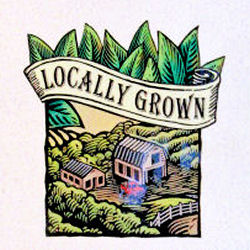 In lieu of my usual meal recap, this week’s Dark Days post touches on the retail side of the equation. Despite our weekend in Los Angeles — which obviously kept us away from our beloved farmers market — and Cameron’s four-day business trip, I managed a number of 100-mile meals.
In lieu of my usual meal recap, this week’s Dark Days post touches on the retail side of the equation. Despite our weekend in Los Angeles — which obviously kept us away from our beloved farmers market — and Cameron’s four-day business trip, I managed a number of 100-mile meals.
I’m sure you’re not particularly interested in the details thrown-together dinners of lazy mac & cheese, wintertime BLTs (with tomato bourbon jam as the “T”), mushroom omelets, or another rehash of Friday spaghetti night… but if you’re feeling left out, I’ve put a few photos on Flickr.
——
As good as we Bay Area locavores have it when it comes to restaurants and farmers markets, the notion of shopping with local products in mind seems to have gained very little traction in the retail world. Awareness of the benefits of locally grown and locally produced foods is spreading rather slowly beyond the rarefied world of the farmers-market set. It’s a difference that’s become more obvious as we seek out a wider variety of local ingredients as part of the Dark Days Challenge.
As I mentioned last month, Whole Foods recently made a much-publicized commitment to support local farms and purveyors. Rather than funneling all orders through a regional warehouse (where demands might be too great for any small farmer), Whole Foods produce managers can now literally buy produce off their loading docks from the people who raise it. Our local Whole Foods stores are following through on the consumer side, with little laminated signs touting the county of origin of most fruits and vegetables. Although the produce is far from exclusively local — a good deal still comes from the southern hemisphere — at least the labels allow consumers to make an educated choice.
Better yet, Whole Foods’ signage has been spreading beyond the boundaries of the produce section. Locally made cheeses are tagged at the service counter; locally produced pastas and sauces are flagged in the deli case, and locally sourced milk and butters get their due in the dairy aisle. PR spin or no, it’s an invaluable resource for those of us trying to reduce our food-footprint without turning into obsessive research nuts.
Even more amazingly, I noticed similar signs dotting the shelves at local supermarket chain Mollie Stone’s California Street location. Placed by an organization called Eat Local SF, these ‘shelf talkers’ are a little more generic than those at Whole Foods — they simply say “eat local”, with no point of origin listed. They’re also a bit less exclusive: Any prepared or processed food made within 250 miles is fair game, regardless of where the ingredients were sourced. (I also noticed a tag under olives bottled by a Southern California company with ‘Napa’ in its name, which were clearly labeled “Product of Spain”.)
But still, it’s baby steps in the right direction, and a stunning turnaround: The same chain didn’t even bother to respond last spring when I wrote them to explain why I was taking my business elsewhere (their employees couldn’t provide information on where their food was sourced). They may not be stocking their shelves any differently than in the past, but this one small bit of communication is making a visible impact on my customer satisfaction.
 If a mainstream chain like Mollie Stone’s can improve, why not the little guys, the ones who painstakingly cultivate an aura of hippie chic? Our neighborhood market — a crunchy outpost called Good Life Grocery — features a decent produce section given the store’s diminutive size. But on a recent trip, we spied exactly one tag from a local farm, and not a single store-placed mention of distances or purveyors. The new-ish Canyon Market, a similar shop over the hill in Glen Park, is similarly bereft of locavore-friendly signage. Which begs the question: When your produce section includes just a few dozen items, would it really be a lot of extra work to let folks know where their food’s grown?
If a mainstream chain like Mollie Stone’s can improve, why not the little guys, the ones who painstakingly cultivate an aura of hippie chic? Our neighborhood market — a crunchy outpost called Good Life Grocery — features a decent produce section given the store’s diminutive size. But on a recent trip, we spied exactly one tag from a local farm, and not a single store-placed mention of distances or purveyors. The new-ish Canyon Market, a similar shop over the hill in Glen Park, is similarly bereft of locavore-friendly signage. Which begs the question: When your produce section includes just a few dozen items, would it really be a lot of extra work to let folks know where their food’s grown?
My current benchmark for locavore signage is Rainbow Grocery, a SOLE shopper’s paradise. Their produce bins sport detailed signs outlining each product’s farming methods, organic certification authority, farm name, and place of origin. Their bulk-foods section includes information about not just the origin and ownership of local products, but the milling location of dry goods like flours and meals (most of which are sent out of state for processing, alas). An entire shelf in their justly famed cheese case is devoted strictly to local products, and a detailed list on their site outlines distances, dairies, and varieties stocked. Even their vast herb, spice, and tea bins are stocked primarily with products harvested in Washington, Oregon, and the California coast.
In time, as customers demand it, perhaps we’ll see the locavore focus move more deeply into the mainstream, much like organic vegetables did over the last decade. In the meantime, we’ll direct our food dollars toward the farmers market, direct-supplier shops like Prather Ranch and Cowgirl Creamery, and the handful of retail outlets that support the choices we’re making.
Whole Foods, Potrero Hill
750 Rhode Island Street (x 17th Street)
San Francisco CA 94107
415.552.1155
Mollie Stone’s Market, Pacific Heights
2435 California Street (x Fillmore Street)
San Francisco, CA 94115
415.567.4902
Good Life Grocery, Bernal Heights
448 Cortland Avenue (x Andover Street)
San Francisco, CA 94110
415.648.3221
Canyon Market, Glen Park
2815 Diamond Street (x Bosworth)
San Francisco, CA 94131
415.586.9999
Rainbow Grocery Cooperative
1745 Folsom Street (x Division/13th)
San Francisco, CA 94103
415.863.0620
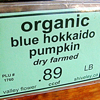

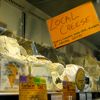
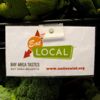
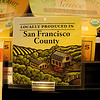




Comment by jen maiser
I just went to Rainbow for the first time in probably 2 months and noticed that they now have bright orange stickers on the locally produced or locally owned bulk items too. That’s a cool new development.
Posted on 11.20.07 at 3:47PM
Comment by jen maiser
oh duh – you have a picture of it there. 😉
Posted on 11.20.07 at 3:49PM
Comment by cookiecrumb
You got it bad.
😀
Posted on 11.20.07 at 4:30PM
Comment by Bri
It’s so great you have taken this challenge to heart. Your Rainbow Co-op sounds like a great place. In Santa Rosa, we have a great health food store called Community, and I’ve gotten so spoiled by seeing the origin of the food they sell and the farm growing it, that I often feel lost and frustrated at other places I have to shop who don’t. I’m so glad you are highlighting your local resources. Gives me a good excuse to do the same in my area. I’m REALLY glad to hear that Whole Foods has made such a commitment. There was a big stink in Santa Rosa when they took over the local health food store and began selling foods from all over the world, when the same thing was being grown in their own back yard. The community protested, and they made an exception for us. Glad to know they’ve gotten on the band wagon at a corporate level. Thanks!
Posted on 11.20.07 at 9:15PM
Comment by Wendy
Hi Anita, great seeing you last weekend! I was telling you about the cranberries I got in my CSA- they are Canneberges and it says from San Fran.
Happy Turkey Day!
Posted on 11.22.07 at 9:05AM
Comment by Tartelette
I have made a commitment to hit the Farmers Market every saturday morning but more importantly to question in depth the perso behind the stall. It is too easy to buy some thing from California and sell it here in SC under “Fresh produce”…not that there is anything wrong with California produce, obviously I am very envious of your display! Anywhooo….keep those posts coming because they keep fueling my desire to come visit your beautiful region!
Posted on 11.22.07 at 9:25PM
Comment by Diane
Berkeley Bowl is pretty good about this, but not to the level of ID’ing “local” regions – but it does say CA vs. other locations for the most part. Fish somewhat. Meat not very much. Still, it’s a start.
Posted on 11.24.07 at 8:43AM
Pingback by Dark Days Challenge - Week #6 Recap « Urban Hennery
[…] In lieu of a Thanksgiving recap, Anita (Married with Dinner) posted a review of local shopping options in her area. She discusses who’s doing what and who isn’t doing anything as far as sourcing and signing local foods. […]
Posted on 11.25.07 at 11:44AM